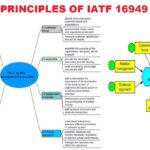Common Obstacles that Derail Training Programs
Introduction:
In today’s fast-paced and ever-evolving business landscape, employee training and development have become pivotal for organizational success. However, despite the recognition of its importance, not all training programs achieve the desired outcomes. According to Dr. F . M Gryna (1988), there are ten underlying reasons why training programs often fail. In this article, we will delve into each of these factors to better understand why some training initiatives fall short of their intended goals.

10 Reasons why Training program fail
1. Cultural Resistance by Line Managers
One of the primary roadblocks to successful training programs is the resistance exhibited by line managers. These managers play a critical role in the implementation and support of training efforts. When they are not aligned with the program’s objectives or don’t see its relevance, they may inadvertently create barriers that hinder the learning process. Bridging this gap between organizational culture and training goals is essential to ensure a successful training initiative.
2. Doubt as to the Usefulness of the Training
When employees question the practicality and usefulness of a training program, they are less likely to engage wholeheartedly. If they fail to see a direct correlation between the skills being taught and their job responsibilities, scepticism can set in. It’s crucial for training programs to clearly communicate the real-world applications of the skills being taught, helping employees recognize the value they will gain.
3. Lack of Participation by Line Managers
Active involvement of line managers is vital for the success of any training endeavour. Their guidance, support, and endorsement provide the necessary momentum for employees to embrace the training. When line managers themselves are disengaged or lack enthusiasm, it can lead to a trickle-down effect that dampens overall participation and commitment.
4. Technique Rather Than Problem Orientation
Focusing solely on teaching techniques without addressing real-world problems can render a training program ineffective. Employees need to connect the dots between the skills they’re acquiring and how those skills can be used to solve challenges they encounter in their roles. A training program should be designed to equip employees with problem-solving abilities, enhancing their confidence in applying newfound knowledge.
5. Inadequacy of Leader/Instructor
The role of the leader or instructor in a training program cannot be overstated. An inadequately prepared or inexperienced leader can hinder the learning process. A skilled and knowledgeable instructor not only imparts information effectively but also serves as a source of inspiration and guidance. Investing in capable trainers is an investment in the success of the training program.
6. Mixing of Participant Levels
When participants with varying skill levels are placed in the same training session, it can create an imbalance that leaves some feeling overwhelmed while others are underchallenged. Tailoring training sessions to the specific needs and skill levels of participants ensures that everyone can benefit and progress at an appropriate pace.
7. Lack of Application During the Course
Learning is most effective when it’s hands-on and applicable. If a training program focuses solely on theory without providing opportunities for participants to apply what they’ve learned, it can result in a lack of practical skills. Incorporating interactive exercises, simulations, and case studies can bridge the gap between theory and real-world application.
8. Overly Complex Language
The effectiveness of a training program hinges on effective communication. Using overly complex language, technical jargon, or industry-specific terminology can alienate participants who may not be familiar with such terms. Striving for clear and concise communication ensures that the training content is accessible and understandable for all participants.
9. Lack of Participation by the Training Function
The training function itself must be actively engaged and participatory in the training program’s development and implementation. When this function is disconnected or passive, it can result in misaligned objectives and inadequate support for participants. A collaborative and engaged training function can drive the success of the entire initiative.
10. Operational and Logistical Deficiencies
Even the best-designed training program can fail if operational and logistical aspects are neglected. Issues such as inadequate resources, scheduling conflicts, or technical glitches can disrupt the learning process and demotivate participants. Thorough planning and seamless execution are crucial to ensure a smooth training experience.
Conclusion
While training programs hold immense potential to upskill employees and drive organizational growth, they are not immune to failure. The reasons outlined by Gryna (1988) shed light on the multifaceted nature of training program failures. By addressing these factors and implementing strategic solutions, organizations can enhance the effectiveness of their training initiatives, ensuring that learning leads to tangible outcomes and sustainable success.
- Top 15 MNCs Every Mechanical Engineer Dreams of Joining in 2025

- How to Digitize and Automate the CAPA Process

- Top 10 Essential Tools Every Mechanical Engineer Should Know

- What is GD&T (Geometric Dimensioning & Tolerancing) ?

- Principles of IATF 16949: A Guide to Quality Management

- The Evolution of IATF 16949: The Automotive Quality Standard

- Top Interview Questions Related to SPC ,Cp and Cpk

- Difference Between Purchase and Procurement




